Getting the behavior you want Why toddlers act the way they do
| Q: |
What motivates your toddler?
| | A: |
The number one motivator for your toddler is your warm, loving
attention. She wants to please and will work hard to be noticed, get
your approval, and snare a cuddle or hug into the bargain. Most toddlers
have a very high need for attention, although this varies according to
temperament and how quickly you’ve responded to her in the past.
Generally, if you’ve been quick to notice and meet her needs then,
paradoxically, she’ll be less concerned about having your attention all
the time, since she knows you are keeping her in mind.
If your child is not
getting the attention she needs by cooperating, her second-best strategy
will be getting you to notice her through misbehaving. She’d rather be
in the spotlight for mischievousness or misbehavior than not be there at
all.
|
Getting the behavior you want
Praise
Warm,
honest, simple praise tells your toddler you notice her and you like
what she’s doing. It makes her eager to do more of the things you like,
and helps her feel good about herself.
Pay attention
It’s
the small ways you notice your child that matter—ruffling her hair as
you go past or waving as she goes down the slide. These tell her you are
keeping her in mind even when you’re not playing together.
Supervise
Being
able to play alone for short periods is common at this age, but your
child still needs you to supervise her closely for safety reasons,
companionship, and to give her praise.
Keep busy
Boredom is the starting point for mischief. Your toddler has a brief attention span of around three to four minutes.
Managing the behavior you don’t want
For your child’s safety and
to help her learn to be cooperative and helpful, there are times when
you’ll need to manage risky behavior or misbehavior.
Up close and personal
When you
want your child to stop what she’s doing, whether it is jumping on the
furniture or getting too close to the hot stove, make your message
count. Squat down to her eye level, look her in the eyes, and tell her
calmly, clearly, and firmly to stop. Specify exactly what she needs to
do, for example “Stop jumping, please sit on the sofa” rather than “No.”
Short and simple
If you need to give your toddler a consequence for misbehavior, make it brief and relate it to the problem.
Consistency
Your
toddler needs to know what you want her to do and what she should not
do. She’ll learn this when you apply the same rules and values
consistently, every day. If you give mixed messages, she’ll be confused
and will find it harder to behave well.
Right away
If you
need to manage misbehavior, do it immediately: the link between behavior
and consequence is then clear. Delayed consequences are ineffective,
since your toddler will have forgotten what she did wrong.
Stay calm
No
matter how irritated or exhausted you feel, never punish in anger. You
may harm your child either emotionally, through your words, or
physically. If you are ready to explode, then walk away, delay, and try
some calming strategies for yourself.
Ignore
This
strategy is only useful for behavior that is irritating but not harmful
or dangerous. Ignoring means withdrawing your attention for a short time
(seconds to a minute) while your child does something like play with
her food or pester for a cookie. Once she’s stopped, that‘s the end of
the matter.
Respect
Maintain
your child’s dignity by making sure, if you have to correct her, that
you do so in private and not in the presence of adults or her friends.
When she’s misbehaved let her know what the problem was, rather than
comparing her to “better” children. Always be sure to refer to choices
as “good” or “bad,” rather than calling children “good” or “bad.”
Your approval
Getting a sticker for good behavior shows your toddler you like what he’s doing and raises his self-esteem.
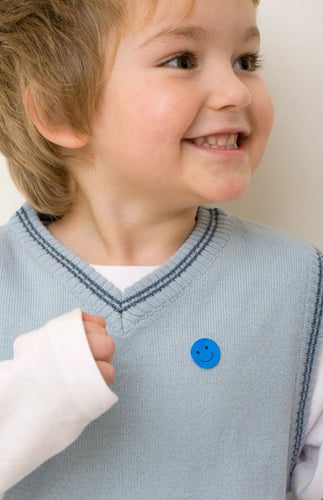
Rewards
Sticker charts work well as motivators for behavior. You could also have them for other members of the family, or pets.
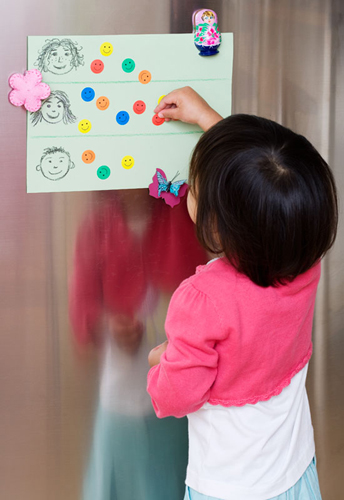
Notice the good
Showing that you notice your child when she’s playing means she won’t need to misbehave in order to gain your attention.

Eye to eye
Make sure your child gets the message when she’s misbehaved by getting down to her level to talk to her.
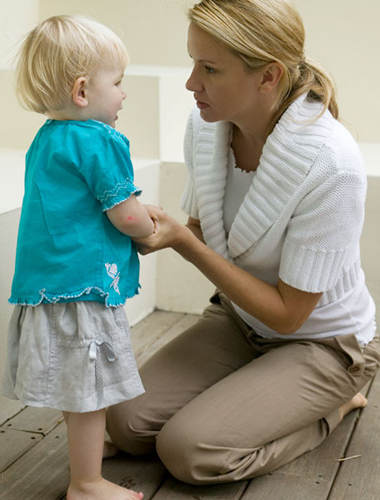
Out of mischief
You’ll need a steady stream of activities to keep your child entertained, otherwise he’ll find something else to do.
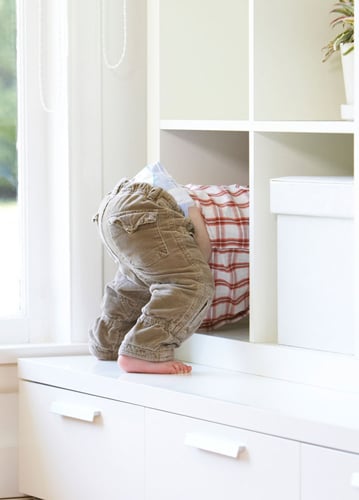
Be realistic
Your child has not yet learned to share, so expect her to get angry or upset when things don’t go her way.
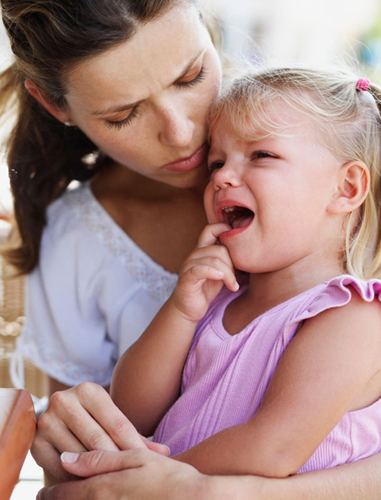
Myths and misconceptions Is it true that…
| Q: |
You need to give four or five times as many positive comments to your child as negative?
| | A: |
The exact number of positives to negatives is debatable,
but it is definitely true that for good self-esteem and a positive
relationship with you, your child needs to hear your praise and
compliments many more times than your censure. Try describing what she’s
done well as a praise method.
|
| Q: |
Toddlers live up their reputation as “Terrible Two’s”?
| | A: |
This is
how many parents feel as their toddler reaches a stage called
differentiation sometime from 16 months to two years of age.
At this point your child recognizes herself to be a separate individual
from you, able to make her own choices, even to disobey you. As she
struggles to assert herself it is normal to have tantrums at least once a
day, hence the label.
|
| Q: |
My child will respond better if I tell her what to do, rather than what not to do?
| | A: |
This is true for children and adults alike.
Your toddler will find it easier to do as you ask if you frame it in
the positive, for example when you say “Please hold my hand as we walk”
she is clear about what to do. If you say “Don’t run away,” she knows
what you don’t want, but may still be at a loss as to what to do
instead. This is especially important when it comes to hitting—“Don’t
hit” is important to say, but parents often forget to model what is okay
to do, instead.
|
|